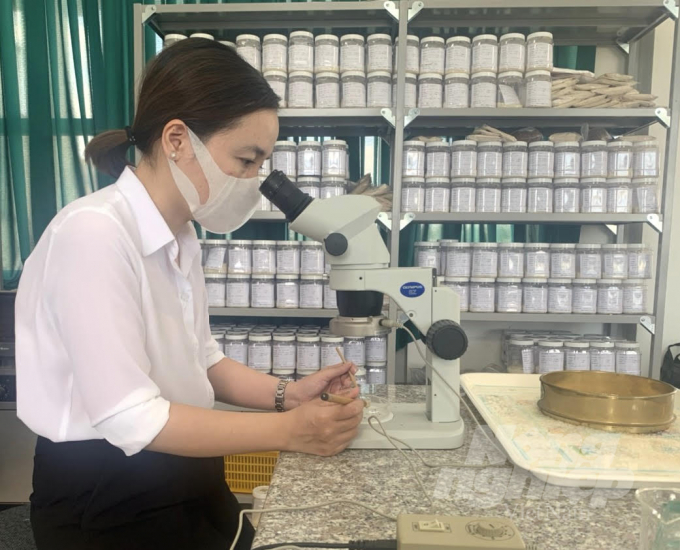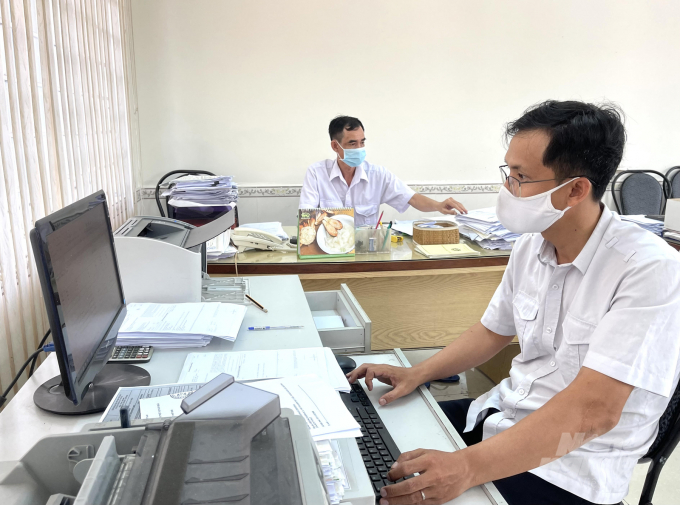November 27, 2025 | 20:50 GMT +7
November 27, 2025 | 20:50 GMT +7
Hotline: 0913.378.918
November 27, 2025 | 20:50 GMT +7
Hotline: 0913.378.918

Plant protection officers carrying out phytosanitary inspection in the Mekong Delta. Photo: HD.
The Mekong Delta is a key agricultural production area of the country, with a natural area of nearly 4 million hectares, of which arable area is about 2.1 million hectares and the rice-growing area alone is about 1.6 million hectares. Therefore, the Mekong Delta has always been a key region for the import and export of agricultural products in the country.
Over the years, stemming from production needs and practical conditions of production, business, and agricultural economic development in the region, in 1994, the Plant Protection Department of Region IX was established, performing its functions of Plant Protection under the Ministry of Agriculture and Rural Development.
Due to the characteristics of the Mekong Delta region with a relatively wide area, the East-Western sea and islands, the southwestern border adjacent to the Kingdom of Cambodia, stretching from Long An - Dong Thap - Kien Giang, the Plant Protection Department of Region IX was assigned the management of plant protection in 9 provinces and cities in the region, including Can Tho city and Hau Giang, An Giang, Kien Giang, Ca Mau, Bac Lieu, Tra Vinh, Soc Trang and Vinh Long.
Mr. Kha Huu Vinh, Head of the Plant Protection Department of Region IX, said that the Department follows the National Single Window administrative reform roadmap under the direction by the Ministry of Agriculture and Rural Development. The Department has strived to achieve many advances in plant protection activities, especially by simplifying administrative procedures, shortening time and creating favorable conditions for organizations and individuals in export-import activities.
According to Mr. Kha Huu Vinh, the order and procedures for plant protection for import, export, transit and post-import of objects subject to plant protection under Circular 33/2014/TT-BNN dated 30 October 2014. At the same time, the Department follows the direction by the Minister of Agriculture and Rural Development in reviewing, reducing the time for customs clearance of goods and ensuring transparency for businesses.

Reception and inspection of plant protection dossiers at the Plant Protection Department of Region IX. Photo: HD.
The Plant Protection Department has also issued a dispatch on publicizing the time of plant protection. In which, the maximum time from inspection to issuance of phytosanitary certificates for roads and airway travel is 4 hours and 10 hours for seaports. Thereby, innovation can be seen in the way of working, dedicated service of the officers and employees of the Department, creating the most favorable conditions for organizations and individuals to carry out plant protection procedures.
The Plant Protection Department of Region IX applies international standards on phytosanitary measures (ISPM), Vietnamese standards and basic standards on plant protection to carry out phytosanitary work.
By receiving feedback and suggestions from individuals, corporate clients, the majority of comments are satisfied with the administrative reform efforts by the Plant Protection Department of region IX.
That is to create favorable conditions and simplify administrative paperwork. Additionally, the inspection of food safety for imports and exports for goods of plant origin, and quality control of imported plant-based animal feeds and aqua feeds is carried out strictly according to regulations.
The Plant Protection Department of Region IX strives with dedication and professional service for the cause of agricultural development in the Mekong Delta.
Translated by Nguyen Hai Long

(VAN) After the institutional merger, Da Nang possesses significant forest-carbon reserves and is proactively engaging in the carbon market, creating a new revenue stream.

(VAN) An Giang strengthens communication against IUU fishing, increases inspections and sanctions, and is determined to remove the EC’s “yellow card” while developing a sustainable fisheries sector.

(VAN) As green transition becomes a global trajectory, Viet Nam’s biggest challenge is not only technology and models, but how to ensure that capital flows reach the right beneficiaries.

(VAN) The Ministry of Agriculture and Environment must spearhead the construction of green governance, spanning decision-making processes and investment standards to policy evaluation mechanisms.

(VAN) The Agriculture and Environment sector of Khanh Hoa has achieved numerous milestones over the past 80 years, contributing significantly to the goal of establishing the province as a centrally governed city by 2030.

(VAN) Viet Nam is entering the pivotal period of 2025-2030, moving toward the formulation of the Remote Sensing Law, which will establish a legal foundation for the development of national digital data.

(VAN) The agricultural sector is finalizing the strategic framework for emission reduction, setting the goal of sharply cutting methane and 403.7 million tons of CO2 equivalent and moving toward Net Zero by 2050.